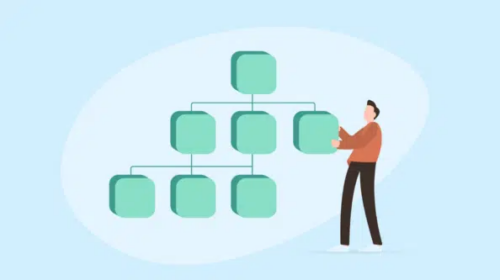Barriers To Audience Buy-In With Lead Generation
Here are some nuances of logic and psychology that could be impacting your ability to connect with audiences and build strong leads.
1. Poor Negotiations & The Endowment Effect
Every potential customer you encounter values their own effort and information. And due to something called the endowment effect, they value that time and data much more than you do.
In contrast, the same psychological effect means you value what you offer in exchange for peoples’ information more than they will.
If the value of what you’re offering fails to match the value of what consumers are giving you in exchange (read: their time and information), the conversions will be weak.
The solution? You can increase the perceived value of the thing you’re offering, or reduce the value of what the user “pays” for the thing you offer.
2. Immediacy & Perceived Value
Humans evaluate rewards in multiple dimensions, including the reward amount, the time until the reward is received, and the certainty of the reward.
The more time before a reward occurs, and the less certain its ultimate value, the harder you have to work to get someone to engage.
Offering value upfront – even if you’re presenting something else soon after, like a live event, ebook, or demo – can help entice immediate action as well as convince leads of the long-term value of their investment.
It can even act as a prime for the next step in the lead gen nurturing process, hinting at even more value to come and increasing the effectiveness of the rest of your lead generation strategy.
It’s another reason why inbound content is a critical support for lead generation content. The short-term rewards of highly useful ungated content help prepare audiences for longer-term benefits offered down the line.
3. Abandonment & The Funnel Myth
Every lead generation journey is carefully planned, but if you designed it with a funnel in mind, you could be losing many qualified leads.
That’s because the imagery of a funnel might suggest that all leads engage with your brand or offer in the same way, but this simply isn’t true – particularly for products or services with high values.
Instead, these journeys are more abstract. Leads tend to move back and forth between stages depending on their circumstances. They might change their minds, encounter organizational roadblocks, switch channels, or their needs might suddenly change.
Instead of limiting journeys to audience segments, consider optimizing for paths and situations, too.
Optimizing for specific situations and encounters creates multiple opportunities to capture a lead while they’re in certain mindsets. Every opportunity is a way to engage with varying “costs” for time and data, and align your key performance indicators (KPIs) to match.
Situational journeys also create unique opportunities to learn about the various audience segments, including what they’re most interested in, which offers to grab their attention, and which aspects of your brand, product, or service they’re most concerned about.
4. Under-Pricing
Free trials and discounts can be eye-catching, but they don’t always work to your benefit.
Brands often think consumers will always choose the product with the lowest possible price. That isn’t always the case.
Consumers work within something referred to as the “zone of acceptability,” which is the price range they feel is acceptable for a purchasing decision.
If your brand falls outside that range, you’ll likely get the leads – but they could fail to buy in later. The initial offer might be attractive, but the lower perception of value could work against you when it comes time to try and close the sale.
Several elements play into whether consumers are sensitive to pricing discounts. The overall cost of a purchase matters, for example.
Higher-priced purchases, such as SaaS or real estate, can be extremely sensitive to pricing discounts. They can lead to your audience perceiving the product as lower-value, or make it seem like you’re struggling. A price-quality relationship is easy to see in many places in our lives. If you select the absolute lowest price for an airline ticket, do you expect your journey to be timely and comfortable?
It’s difficult to offer specific advice on these points. To find ideal price points and discounts, you need good feedback systems from both customers and leads – and you need data about how other audiences interact. But there’s value in not being the cheapest option.
5. Lead Roles & Information
In every large purchasing decision, there are multiple roles in the process. These include:
- User: The person who ultimately uses the product or service.
- Buyer: The person who makes the purchase, but may or may not know anything about the actual product or service being purchased.
- Decider: The person who determines whether to make the purchase.
- Influencer: The person who provides opinions and thoughts on the product or service, and influences perceptions of it.
- Gatekeeper: The person who gathers and holds information about the product or service.
Sometimes, different people play these roles, and other times, one person may hold more than one of these roles. However, the needs of each role must be met at the right time. If you fail to meet their needs, you’ll see your conversions turn cold at a higher rate early in the process.
The only way to avoid this complication is to understand who it is you’re attracting when you capture the lead, and make the right information available at the right time during the conversion process.
6. Understand Why People Don’t Sign Up
Many businesses put significant effort into lead nurturing and understanding the qualities of potential customers who fill out lead forms.
But what about the ones who don’t fill out those forms?
Understanding these values and the traits that drive purchasing decisions is paramount.
Your own proprietary and customer data, like your analytics, client data, and lead interactions, makes an excellent starting place, but don’t make the mistake of basing your decisions solely on the data you have collected about the leads you have.
This information creates a picture based solely on people already interacting with you. It doesn’t include information about the audience you’ve failed to capture so far.
Don’t fall for survivorship bias, which occurs when you only look at data from people who have passed your selection filters.
This is especially critical for lead generation because there are groups of people you don’t want to become leads. But you need to make sure you’re attracting as many ideal leads as possible while filtering out those that are suboptimal. You need information about the people who aren’t converting to ensure your filters are working as intended.
Gather information from the segment of your target audience that uses a competitor’s products, and pair them with psychographic tools and frameworks like “values and lifestyle surveys” (VALS) to gather insights and inform decisions.
In a digital world of tough competition and even more demands on every dollar, your lead generation needs to be precise.
Understanding what drives your target audience before you capture the lead and ensuring every detail is crafted with the final conversion in mind will help you capture more leads and sales, and leave your brand the clear market winner.




